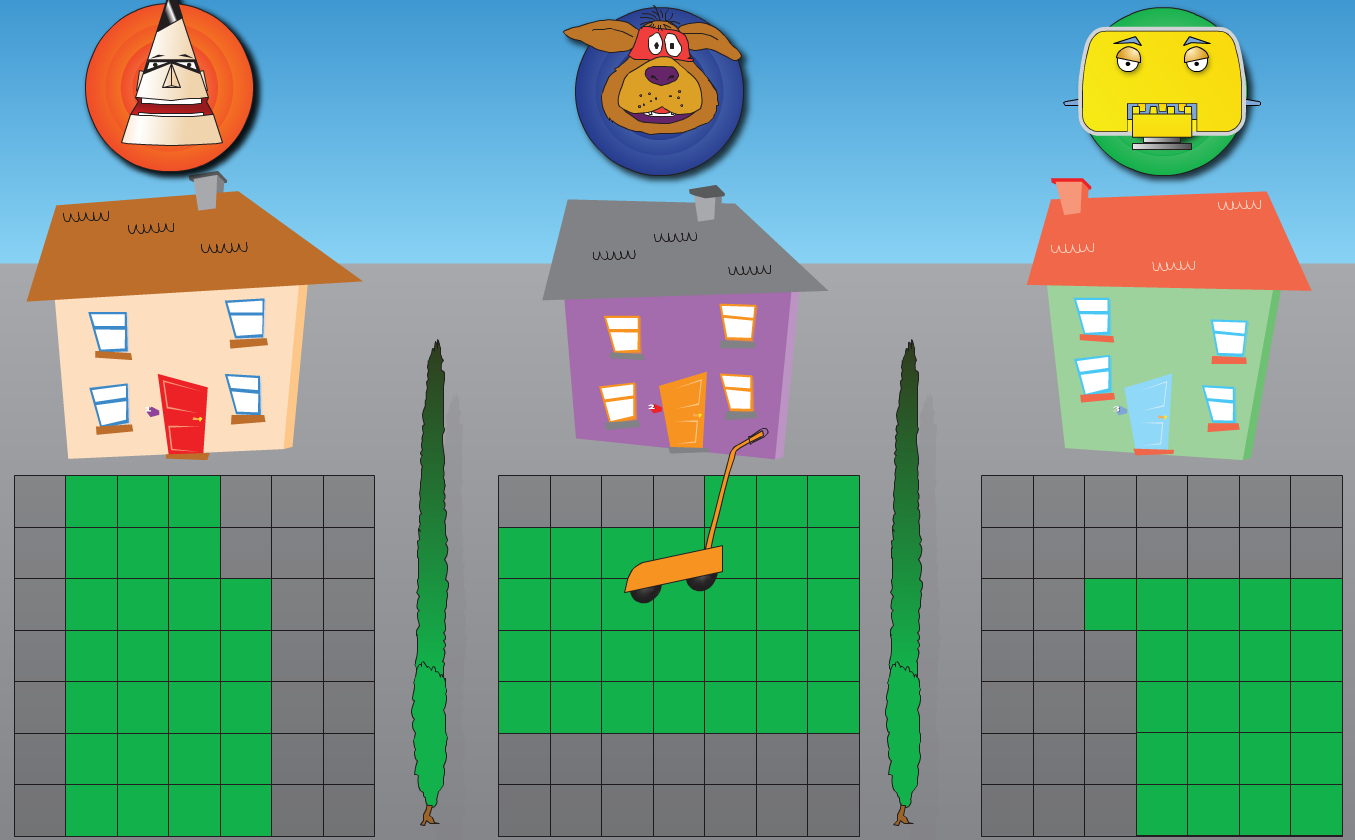I Count Perimeters and Areas
4th Grade Mathematics: chapter 33
Mathematics student’s book page 82: I Count Perimeters and Areas
(Greek educational system)
|
|
Materials for the lessonThe teacher brings in class a square meter (they exist in most schools). This square meter is divided into square decimeters. Teacher should have this square meter duplicated in paper so as to easily carry. S/he also brings three meters. Students need paper and a pencil. |
Layout of the classroomStudents have been advised to wear appropriate clothing which could be dirtied. One has the option of getting dressed as a construction worker. |
|
Phase 1The teacher divides the students into three mixed sex and dynamic groups. Each group is given a square meter. The groups are parts of a construction team counting for tiles and skirting board. Three foremen/women are chosen by each group to serve as coordinators.Students are asked to count the perimeter and the area of three spaces in school. One can be the classroom, another one could be the outside corridor or the school cafeteria (one should opt for manageable spaces). The students should count the perimeters using their meters and the area using the square meter at their disposal. The area should be counted both in square meters and square decimeters. The perimeter both in meters and decimeters. |
|
Phase 2When all three groups have finished with counting they report to the class. Perimeter is given in meters and decimeters and the area in square meters and square decimeters.The teacher presents the groups with the price of putting tiles and skirting boards per square meter and meter accordingly.Students are asked to come up with the total price, were they to charge a customer for their work in the space they had been assigned. |
|
Phase 3The teacher asks the students to relate in their groups the numbers in square meters and square decimeters so as to understand that 100 square decimeters equal 1 square meter and 10 decimeters equal I meter. |


 SmartOWL
SmartOWL